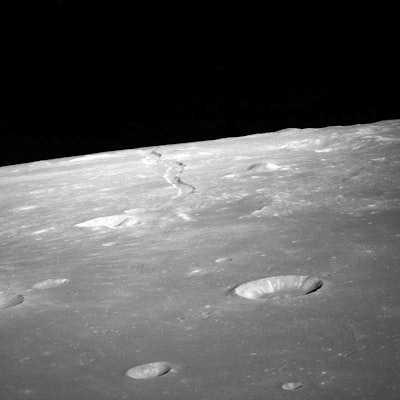Explore the World's Best Ideas
Join today and uncover 100+ curated journeys from 50+ topics. Unlock access to our mobile app with extensive features.
One more moon, kind-of
There’s another sorta, kinda moon in a sorta, kinda orbit around Earth that was discovered only in 2016. The quasi-moon - named Kamo’oalewa, after a Hawaiian word that refers to a moving celestial object - is not much to speak of, measuring less than 50 m (164 ft) across.
It circles the Earth in a repeating corkscrew-like trajectory that brings it no closer than 40 to 100 times the 384,000 km (239,000 mi.) distance of our more familiar moon. Its odd flight path is caused by the competing gravitational pulls of the Earth and the sun, which continually bend and torque the moonlet’s motions.
11
299 reads
The origin of Kamo’oalewa
And according to a new study in Nature, we may at last know how it was formed.
The moon’s been getting bombarded by space rocks for billions of years, resulting in all manner of lunar debris getting ejected into space (nearly 500 bits of which have made it to the surface of the Earth as meteorites). Kamo’oalewa is one such piece of lunar rubble that spiraled away from the moon.
But rather than landing on Earth or simply tumbling off into the void, it found itself a quasi-satellite in its own right.
10
189 reads
Not here for long
Kamo’oalewa won’t stick around all that long, as its current trajectory is not entirely stable. According to estimates from Sharkey (researcher) and others, the object will remain an earthly companion for only about 300 more years - nothing at all on the cosmic clock - after which it will break free of its current gravitational chains and twirl off into the void.
Originally a part of the moon, then a companion of Earth, it will spend the rest of its long life traveling on its own.
12
163 reads
IDEAS CURATED BY
CURATOR'S NOTE
I never knew about this quasi-moon. If you are into space and space exploration I highly recommend Jeffrey Kluger's weekly newsletter from Time.com.
“
Liviu Lica's ideas are part of this journey:
Learn more about scienceandnature with this collection
Basic survival skills
How to prioritize needs in survival situations
How to adapt to extreme situations
Related collections
Similar ideas
Read & Learn
20x Faster
without
deepstash
with
deepstash
with
deepstash
Personalized microlearning
—
100+ Learning Journeys
—
Access to 200,000+ ideas
—
Access to the mobile app
—
Unlimited idea saving
—
—
Unlimited history
—
—
Unlimited listening to ideas
—
—
Downloading & offline access
—
—
Supercharge your mind with one idea per day
Enter your email and spend 1 minute every day to learn something new.
I agree to receive email updates



